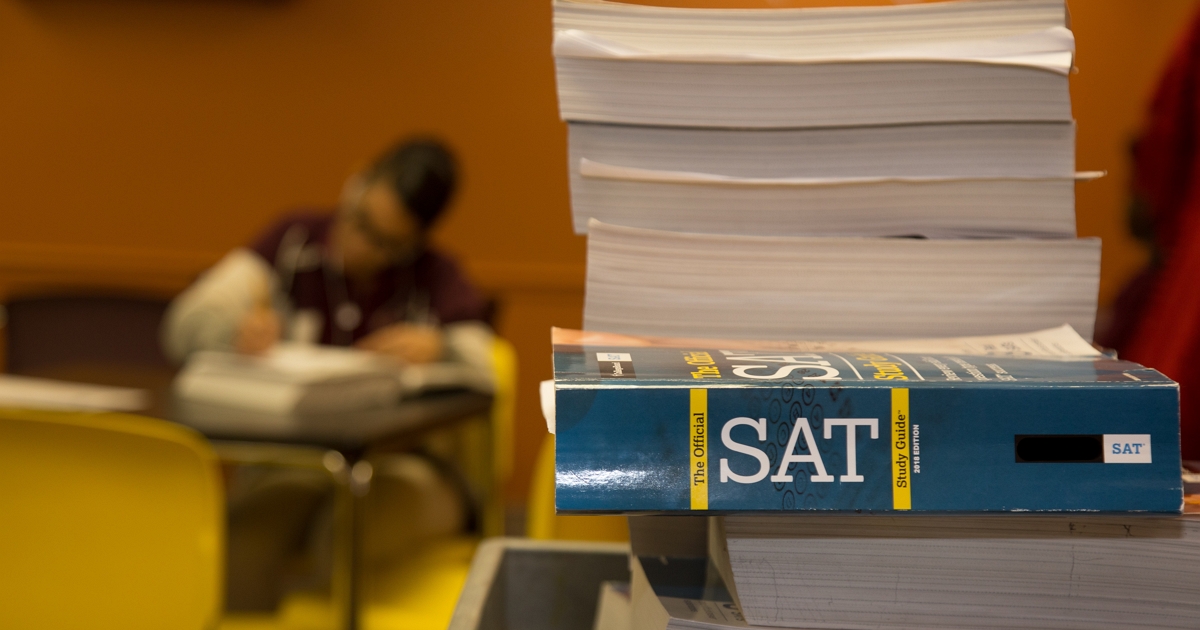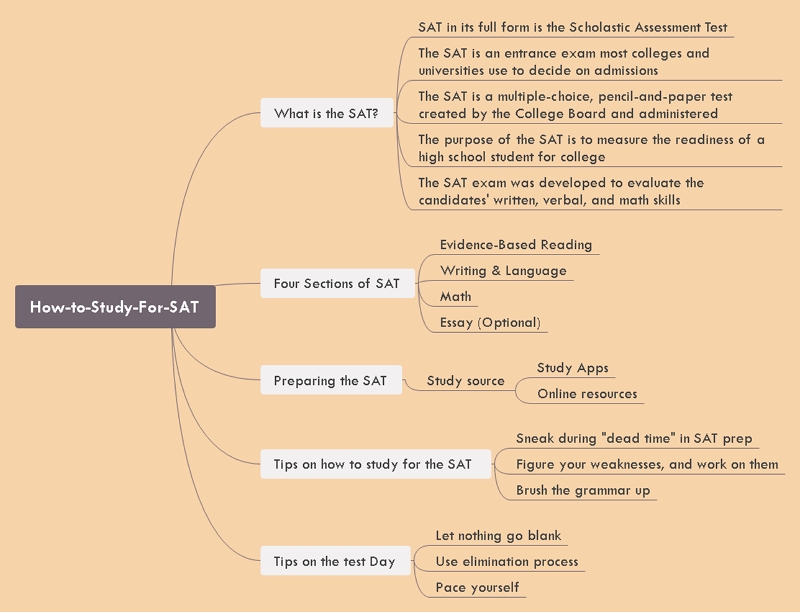Complete Guide To SAT Preparation

The SAT is an entrance exam most colleges and universities use to decide on admissions. The SAT is a multiple-choice based, pencil-and-paper test created and administered by the College Board. To know how to study for the SAT, you first need to understand the SAT’s definition and purpose.
The primary purpose of the SAT is to evaluate the readiness of a high school student for college. SAT, in its full form, is the Scholastic Assessment Test, previously known as the Scholastic Aptitude Test. The SAT exam was developed to evaluate the candidates' written, verbal, and math skills.
All sections of the SAT work together to test the students’ learning in high school and essential concepts to excelling in college. Every section in the SAT varies in terms of the - ,nbsp;number of questions in it and the time limit for each section.
- Evidence-Based Reading
Write down the central theme you're considering in the middle of a blank sheet of paper or whiteboard.
This section on reading focuses on the understanding of vocabulary in the given context. In this section, each of the 52 questions will be based on a passage. A total of five passages will be given to you:
- 1 Passage on the literature of the United States or the world
- 2 History/social studies paragraphs
- 2 Scientific passages (that may include graphs, charts)
You may be given a pair of related passages on some areas of the Reading section, instead of a single passage. You may also find graphs or other forms of representation of the data.
The Reading section tests two core competences:
- Evidence command: Your ability to find concrete evidence in the passage to support the author's claims or responses to specific questions.
- Words in Context: Your ability to decipher the meanings of vocabulary words in the context of the passage, and your skills to understand how word choice affects a text's style and tone, would be tested.
- 2.Writing ,amp; Language
The Writing and Language section may look similar to the reading section. However, instead of measuring your reading comprehension skills, this section measures your ability to identify and correct grammatical errors and stylistic weaknesses within passages.
These passages cover a wide range of subjects, including careers, history/social studies, science, and humanities. Your primary objective in this section on writing is to correct words and sentences in the given passages.
Section Writing and Language measures the following competencies:
- Command of ,nbsp;Evidence
- Words in Context ,nbsp;
- Expression and clarity of ideas
- Standard English Conventions
Since none of the passages in this section are fictional works, your best bet is to read real-life newspaper and magazine articles, persuasive texts, and essays. Using these texts as you study, you will hone your editorial eye, identifying transitional words and connexions in your thoughts. You're also going to want to examine how the author builds his or her argument or supports its main point.
- Mathematics
The Section on maths consists of two subsections:
- Math no-calculator, you are not allowed to use a calculator.
- Math calculator, you can opt to use a calculator.
The Math section is the only section on the SAT (excluding the Essay) that contains the grid-in, a non-multiple-choice question format. Twenty-two percent of math questions are grid-ins, so while it's not the main question format on SAT math, you must understand how they work.
The Section on Math tests you on the following concepts:
- Everything related to algebra
- Problem-solving and analyzing data
- Advanced maths
- Additional mathematical themes
Bonus Tip: Memorize all the critical SAT Math formulas you're going to need for test day.
- Essay (Optional)
The SAT Essay is a section in which you must read a 650-750-word passage and then write an essay analyzing how the author constructs his or her argument and how persuasive the argument is.
Note that you are not being asked if you agree with the argument or disagree. Unlike the other three SAT sections, the Essay is entirely optional. Whether you should take it depends on where you are applying, since some colleges may require an essay submission.
Study Apps
There are tons of application-based platforms that provide new, interactive ways of preparing for the SAT. Edraw EdrawMind is one such app that will help you prepare for GRE and help answer - how to study for the SAT?
Online resourcesResources for online practice testing provide sample SATs that you can take to get used to the questions you will see on the exam. Typically, these online exams are free or are offered on an annual subscription basis.
- During "dead time," sneak in SAT prep.
Many of us have some parts of the day where we're just hanging out. Perhaps we're waiting to meet a friend, take the bus, or an annoying commercial break. Well, don't spend it waiting to take out your flashcards and do a quick five minutes revision.
- Figure your weaknesses, and work on them
You will, of course, be good at some things on the SAT, and it's good to maintain that edge from time to time by practicing those concepts. But figuring out where you are struggling is better. Take a diagnostic test to find out which areas to work on when preparing for the SAT.
- Brush your grammar up
Nearly half of the writing section consists of questions about grammar. While many have to do with essay questions about the ‘big picture,’ others rely on basic grammar.
- Don’t leave anything blank. There is no penalty for guessing, so if you don't know the answer, go ahead and take a guess. Do your best to answer all the questions.
- Use the elimination process. Crossing choices as you go along really helps when you get that feeling you might need to guess. Every time you confidently remove an option, your chance to select the correct answer from the remaining options increases.
- Pace yourself. Skip questions that will take longer and come back to them if you have time.






